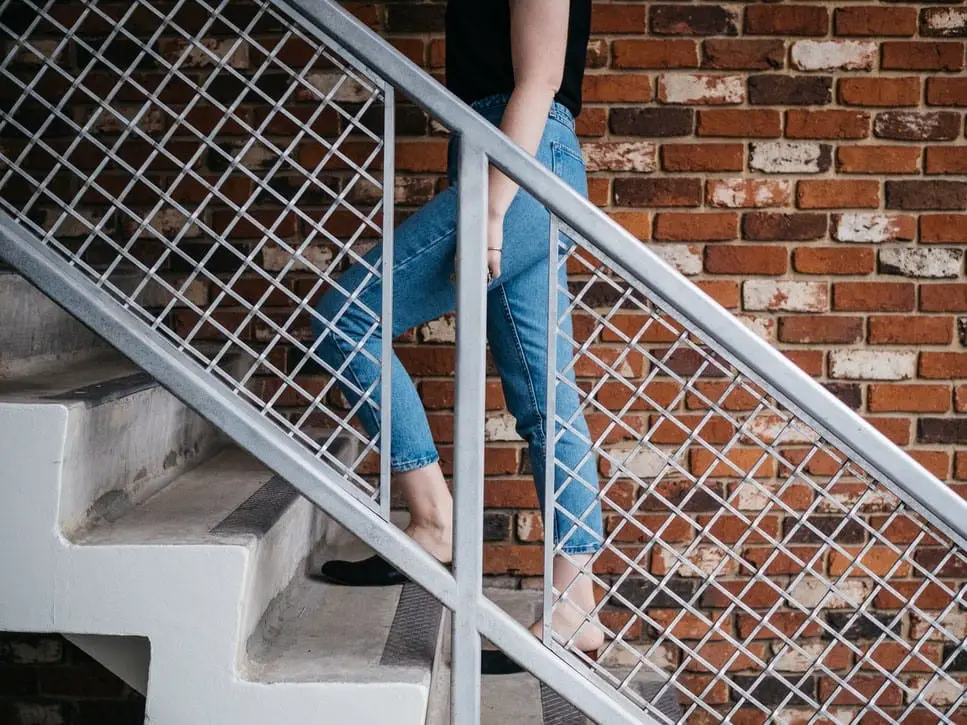When someone mentions blue objects, and blue jeans, in particular, your mind races to everything fashionable. You associate Jeans with fashion, youth, rebellion and style. Where do you think the first pair of blue jeans was born? At the studio of a fashion designer? No.
When jeans were first made, it was hardly a fashion item. It was a garment designed for the working class. Surprised? Read on to know more about the history of blue jeans.
Birth of The First Blue Jeans
The first jeans took shape in 1873 in Levi Strauss & Co. Levi Strauss was born in 1829 in Germany as Loeb Strauss. In 1847 he shifted to New York with his mother and sisters to join his brother’s dry goods wholesale business. In 1850 Loeb changed his name to Levi and became an American citizen.
The California Gold Rush prompted Levi Strauss to shift west and open a West Coast branch of the family dry goods business. In March 1853 Levi opened his dry goods wholesale business and named it Levi Strauss & Co. He sold items like clothing, bedding, combs, purses and bolts of fabric through his wholesale company.
Cotton cloth was part of the items sold in the store owned by Levi Strauss. Among his customers was a tailor Jacob.W. Davis, a resident of Reno, Nevada. Jacob Davis was born in Riga, Latvia. He was a seamster in Latvia. In 1854, he crossed over to the United States and opened a tailoring store in New York.
In 1868 Davis moved to Reno, Nevada, with his entire family and set up a tailoring store in 1869. This is the shop where the first step towards the making of blue jeans was undertaken. Davis used to stitch pavilion, saddle blankets and coach covers, which were sold to railway workers. Davis used industrial- strength cotton “duck” and industrial-strength cotton “denim” fabric for creating such items. He purchased these raw materials from Levi Strauss & Co in San Francisco.
The First Blue Jeans
It was in January 1971 that Davis received an unusual request from one of his customers. It was the wife of the local woodworker who wanted a set of trousers for her plus-sized husband. She wanted the trousers to be extremely strong and long-lasting.
This request required some innovation. Jacob used heavy-duty cotton “duck” cloth to stitch the pants. He knew from his experience as a tailor that flies and pockets were the parts most likely to rip in pants. Jacob was habituated to using copper rivets on saddle blankets. He used those copper rivets to secure the pant pockets so that they wouldn’t tear easily.
The customer was very happy and soon word of mouth publicity led to more orders. People who needed strong workwear loved those pants. Orders increased and Jacob created 200 sets in the following 18 months. He made some from industrial-strength cotton “duck” and others from industrial-strength cotton “denim”. Both were extremely popular among the workers.
Official Recognition
The rise in popularity of jeans as one of the most loved blue objects gave rise to fears of duplication. Jacob became worried that someone else would patent his idea and gain the benefits of his innovation. Seeing its long term benefits and scope for growth, Jacob took a decision to patent his idea. But money was a problem. Jacob lacked sufficient funds to apply for the patent.
He approached Levi Strauss to support him. Levi Strauss saw the potential in the business and agreed to help Davis with funds. They jointly applied for the patent and in 1873 the patent was approved in the name of Jacob W Davis and Levi Strauss and Company. The jeans were officially born.
After receiving the patent Levi Strauss set up a factory to produce riveted pants. This factory was named Levi Strauss & Co. Levi appointed Jacob Davis to supervise production activities at his factory.
Jeans were originally meant as working clothes, and they were created with durable materials. The men’s jeans had the zipper down the front. The women’s jeans had a zipper on the left side. Both were loose-fitting and more like overalls. The 1890 design of Levi’s 501 design became the foundation of the popularity of denim jeans.

Naming of Jeans
Initially, Levi Strauss produced strong pants with thick material targeted at the working class. Till 1960, they called them ”waist overalls”. It was only in the 60s that the overalls made by Levi’s came to be called jeans.
The term jeans made an appearance as early as 1795 in Genoa. In the year 1800 Massena’s troops entered Genoa. Jean-Gabriel brand was entrusted with supplying them uniforms. The firm supplied them with uniforms made of blue cloth. This cotton corduroy was called either jean or jeane. The uniform was called “bleu de Genes” which later became blue jeans.
The cotton corduroy called jeans was exported throughout Europe from the Republic of Genoa.
Blue Denims
The word denim is derived from the fabric “serge de Nimes”. This fabric has its origin in the city of Nimes in France. Denim has been in use in America from the 18th century. It is said that weavers from Nimes accidentally discovered denim when they were trying to copy jean.
Denim is one of the blue objects that is made with indigo dye to make blue jeans. By the year 1911 Levi Strauss & Co stopped manufacturing sturdy pants out of cotton duck and started making them only out of denim. Denim was found to be a superior fabric that got comfortable after every wash. Levi’s garments were so popular that the company established a second factory in Frankfort, Indiana, in 1920.
The dark blue color and stiffness made denim a sought-after fabric for trousers in the 1950s.
Growth in Popularity Through the Decades
Jeans began their journey as working clothes, but soon enough, they started gaining in popularity as fashion wear. Blue jeans started gaining popularity when Hollywood made cowboy movies with actors clad in jeans.
Production of jeans dropped during World War 2. American soldiers would wear jeans when stationed across Europe. They would wear jeans during off duty hours. Their jeans got noticed and became popular. After the end of the war, other jeans companies like Wrangler and Lee appeared on the horizon.
In the 1950s, Youngsters made blue jeans a sign of rebellion. Hollywood’s movies such as “The Wild One” and “Rebel Without a Cause” give a thrust to the popularity of jeans among youngsters. Some schools, theaters and restaurants banned jeans since they were associated with rebellion. This increased the popularity of blue jeans.
The 1952 Hollywood movie “Clash by Night” in which Marilyn Monroe wore jeans inspired women to start wearing jeans. By then, the high-waisted work pants were slightly slimmed down for more aesthetic appeal.
Blue jeans became a more acceptable fashion statement in the 1960s and 1970s. During this period, manufacturers started making different styles of jeans.
Beatles changed their look to a more relaxed style, which included Levi’s jeans. Decorating blue jeans with colorful patches and embroidery became a popular trend.
The turning point in the popularity of blue jeans came when in 1965, a boutique in the New York East Village experimented with jeans. They washed a new pair of jeans to make them look old and shabby. They then decorated the jeans with patches and decals. The jeans fetched a price of $200. The idea was a hit.
Designer Calvin Klein showed blue jeans on the ramp for the first time in 1976. In the 70s ripped knees and frays came to be noticeable. The decade also saw the emergence of a denim-on-denim trend. People also started wearing denim skirts and jean jackets during this period.
Pop -culture icons like Madonna ensured the growth of the popularity of blue jeans in the 80s. In this decade, designers started experimenting with rips, frays and different types of washes, including stone-washed and acid-washed.
In the 90s the patches and embroideries on jeans gave way to loose-fitting baggy style jeans. Carpenter style jeans with pockets and overalls found acceptance in this decade. Luxury fashion houses such as Versace, Dolce & Gabbana and Dior started entering the jean market.
The new millennium saw improvements in technology and denim became more stretchy. This gave rise to the style of well fitted skinny jeans.
Present Day Blue jeans
Blue jeans have come a long way since they were first created over a century ago. From being the sturdy, long-lasting workwear, they became a fashion accessory. The garment which was originally designed for the working class has become a fashion statement among the rich and famous.
In the present day, jeans are available in various colors and fittings. But the blue jeans remains a classic.
Data suggests that around 450 million pairs of jeans are sold in the United States every year.
Jeans have evolved from being workwear to being rebellious and finally, they have become a fashion statement. America has almost found a new identity due to jeans.
In present times, people of all ages wear jeans. Jeans have been around for more than a century, and they seem ready to rule our wardrobes for another century. If you are a person who loves blue objects, blue jeans are definitely for you.



